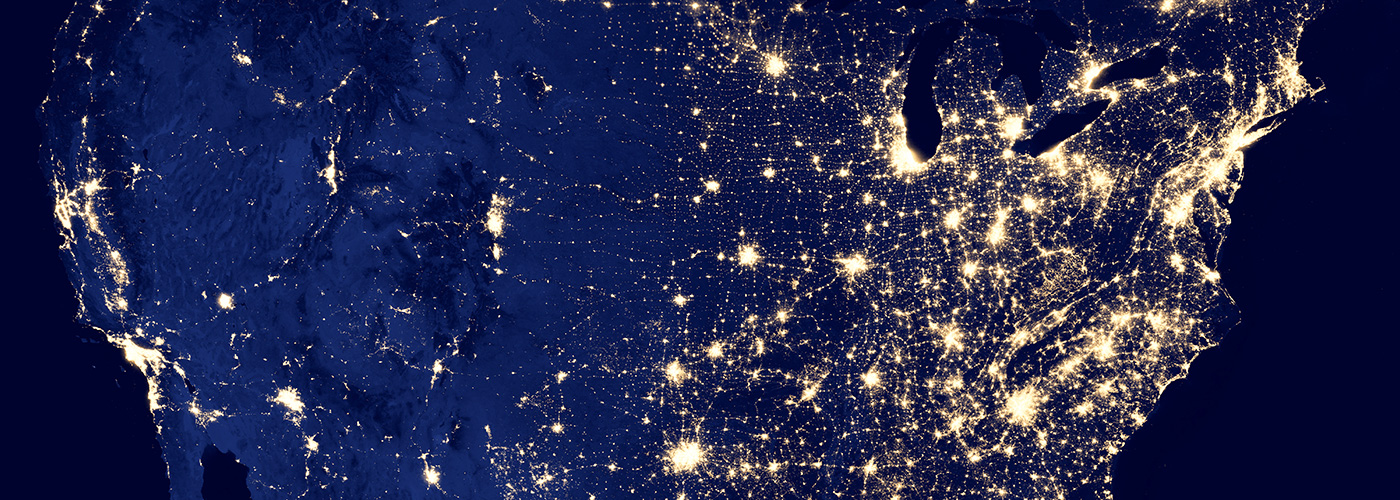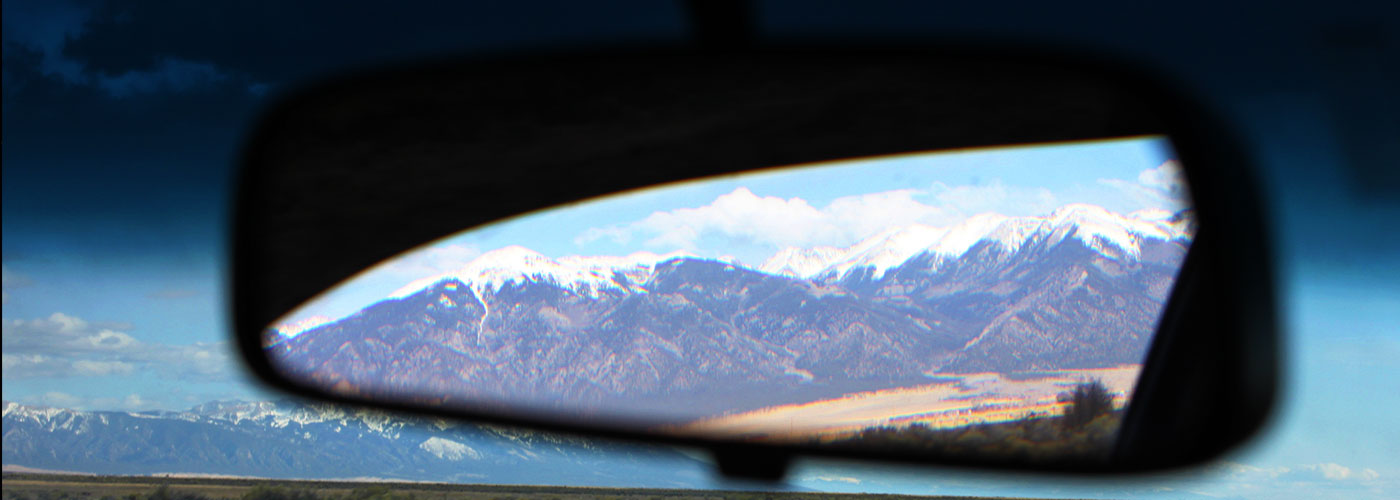The United States of America has enjoyed a century of being the best, brightest, and wealthiest of nations. We enjoy a historic list of “firsts” in flight, computers, food processing, automation, and culture.
But, as Larry Fink, CEO of Blackrock — the largest investment firm in the United States — says, today we live in a divergent world. Our status as a nation is being fracked by challenges in infrastructure, demography, and character. So far, we have more challenges than solutions.
Our nation’s greatness lies in the mindfulness of its people to overcome problems once they realize the facts. Tweet This Quote
The headlines today say that U.S. middle-class incomes rose five percent over 2014, the biggest jump since data was first recorded in 1968. Incomes are up and joblessness is down. This may be election year effervescence, or it may be a trend that will tug us out of our 2008-induced Big Recession. We can dream.
Still, these factoids do not remove hard realities. Below are some of the biggest challenges we face right now.
It used to be that poverty was for other people.
Poverty doesn’t just exist in Africa, India, or Latin America. Even as one of the world’s wealthiest nations, the U.S. has the largest percentage of children — 15 percent (roughly 1 in 6) — living in poverty.
Data shows that even at the height of the 2006 economic bubble, nearly eighteen percent of the U.S. was living near poverty levels. Today’s numbers vary but show no improvement, and the number of poor on our planet is 1.4 billion and growing.
Even as one of the world’s wealthiest nations, the U.S. has the largest percentage of children living in poverty. Tweet This Quote
Poverty crushes rural communities in Nebraska, Minnesota, South Dakota, Missouri, and Pennsylvania, as well as zip codes in California, New York, and Florida.
The question becomes, how can we bring the poor’s tremendous curiosity, resourcefulness, and innovation to bear on their own progress? How can we encourage children living in poverty to prosper, succeed, and become the seeds for their own future?
How can we bring value to rural areas that does not rely on plundering local natural resources for coal, oil, forests, orchards, and croplands? The provocative thought that needs thinking is, how can poor populations become profitable and self-sustaining markets?
The U.S. education system once put man on the moon.
But in international comparisons today, U.S. high school students rank 35th in math and 27th in science. That puts the United States not only behind Poland, Latvia, Slovenia, and Finland, but also major U.S. competitors like China, Russia, Germany, Japan, and Britain.
That’s not all. Approximately 49 percent of all African-Americans and Hispanics drop out before they finish high school.
The education of our middle class is also sliding backward. We knew this in our soul of souls every time Jay Leno or Jimmy Fallon approached random strangers and posed questions like, “What is President Obama the president of?” Answer: Embarrassed giggles, dumbfounded stares. The routine has become a national meme.
Meanwhile, education for the upper classes is rising. Over time, knowledge disparity will cause economic disparity, with predictable consequences. Some parents have taken it upon themselves to teach their children: home schooling grows at 7 to 15 percent annually, according to advocacy organization National Home Education Research Institute.
Of all the industrialized nations, the United States has the highest percentage of its population in prison. Tweet This Quote
We need to re-learn the ABCs of education and invert the student/teacher ratio from 30-plus students per teacher to 30-plus teachers per student. Internet experiments like Khan Academy are helping with some of the heavy lifting. Writing lab 826 and Time Warner Cable’s “Connect A Million Minds” are initiating ways to promote creative writing and science, technology, engineering and math. Pearson, the world’s largest educational firm, is also pursuing new efforts to promote literacy levels in the U.S. and around the world.
Pop quiz. How do we evolve every student’s innate curiosity and develop their natural wonder into something useful, productive, and self-enhancing for their own lives as well as for society?
Is orange really the new black?
Of all the industrialized nations, the United States has the highest percentage of its population in prison. We have the highest population of women in prison. And the number of American youth in prisons is at least five times higher than other industrialized nations. According to census data, the United States accounts for less than five percent of the world’s population but has about 22 percent of the world’s prisoners. While older generations look at “doing time” as cause for shame, some might view it today as the new normal.
Public servants were once looked upon as the moral high ground, but today dozens of politicians have prison records, including a few governors, state senators, and aldermen (four of Illinois’s last seven governors have been imprisoned).
The number of American youth in prisons is at least five times higher than other industrialized nations. Tweet This Quote
Martha Stewart, who built a tidy empire by teaching us where to put the sherbet spoon and how to cook Thanksgiving dinner, spent five months as a jailbird. Celebrities from Mark Wahlberg to Lindsay Lohan have spent time behind bars for everything from assault to partying too hard. While some might look at “doing time” as cause for shame, today it might be a badge heralding the new normal.
As states have become economically challenged, prison management was even turned over to private management companies. This act ignored the challenge of ensuring prisoners were not alienated from their “inalienable” human rights. Fortunately, private prison management has recently been overturned.
And still, the U.S. is the only Western nation that continues to mandate capital punishment, ranking fifth behind China, Saudi Arabia, Iran, and Iraq.
I am a rainbow.
The assumption of a white majority is changing all over these United States. In fact, Caucasians are already the minority in New York City, our nation’s largest city. The largest population of Somalis outside Somalia is in Minneapolis, Minnesota, a land of historically French, Irish, German, Italian, and Scandinavian descendants. The largest population of Hmongs outside of Vietnam is also in Minneapolis. The largest population of Hispanics outside Los Angeles is in Chicago.
(Countdown: The United States of America is shared by 317,887,918 people and counting. Census 2010 figures show 231,040,398 whites, 42,020,743 blacks, 50,477,594 Hispanics, 17,320,856 Asians, 5.2 million Native Americans, and 1.2 Hawaiians and other Pacific Island citizens.)
By the year 2025, the number of people living in the U.S. will grow by more than 72 million persons. Tweet This Quote
By the year 2025, the number of people living in the U.S. will grow by more than 72 million persons.
Asians are the fastest-growing segment (Chinese, Japanese, East Indians, Philippines, Vietnamese, Laotians) and account for over half (56 percent) of the growth. California’s Hispanic population will more than double by 2025, and states like Illinois, Texas, New York, and Florida will also experience higher Latino populations. (Remember that education statistic about half of all Hispanics dropping out of high school?)
Caucasians will be the slowest growing segment.
Question: If the basis of society is its ability to communicate, what does it mean when the majority of the largest populations — English and Spanish — cannot talk to one another?
Where else does it hurt?
In the 1950s, other countries visited U.S. hospitals in order to imitate U.S. systems and standards, considered to be the finest in the world. But today our health care system is ailing.
U.S. health care ranks tenth of all the industrialized nations (United Kingdom is first), and U.S. life expectancy today ranks 42nd in the world, despite the fact we spend more on health care per person than any other country.
Some Americans are deciding not to be treated by their local physician or health care plan at all: an estimated seven million Americans will take a medical vacation this year. They fly to Mexico, Thailand, or Malaysia for medical services, either because they can’t afford to undergo treatment in the U.S., or our national sense of bargain hunting leads us to Singapore (or any one of 41 other countries) for better care.
The pig is reaching the end of the python.
Famously self-pampered, self-indulgent, and self-motivated, Baby Boomers gave us Woodstock, BMWs, Nikes, personal computers, designer jeans, and smoothies.
And Boomers still are looking for ways to kick the world in the ass, retiring at the rate of ten thousand a day. But many experienced professionals continue to work as mentors and investors. You can spot them as volunteers on projects in developing places like Africa, Asia, and South America. Others are creating their own jobs as entrepreneurs and business owners.
U.S. life expectancy today ranks 42nd in the world, despite the fact we spend more on health care per person than any other country. Tweet This Quote
Yet, experts warn, even with over $17 trillion transferring into 401Ks over the next two decades, some Boomers reaching retirement age will not be able to pay their own way. A study by the Center for Retirement Research at Boston College estimates over 60 percent of households may be unable to live the way they prefer, or to pay for their healthcare. The Employee Benefits Research Institute estimates that couples will need over $300,000 to help cover health expenses alone.
What this means is that some retirees will continue to work, even if it’s just to continue employee health benefits. Vitality, resilience, openness, and curiosity are not just for the young.
Questions. If we can identify an aging population that doesn’t want to retire in the gated communities of Florida and Arizona, can we design communities where older persons feel they belong? How can we create meaningful work for aging citizens with lifetimes of experience, knowledge, and training?
There is no end, only new beginnings.
It is no longer enough to paintbrush these problems as “challenges.” Our nation’s greatness lies in the mindfulness of its people to overcome problems once they realize the facts. Dramatic disadvantages call for dramatic solutions.
Solving these problems starts by imagining what you can do. Tweet This Quote
We can hope for positive transformation.
It’s already started. All over the country, corporations and communities are no longer waiting for government agencies to find solutions. They are taking back the responsibility for social progress and committing their own solutions and monies toward those solutions. We have already mentioned above the Bill and Melinda Gates Foundation, TimeWarner Cable’s “Connect A Million Minds” effort, Pearson (an Unreasonable Group partner), and the Khan Academy. And recently, Facebook’s Mark Zuckerberg and Priscilla Chan committed $3 billion to fighting disease.
But the real solve is for each of us to face these problems as individuals. Start by imagining what you can do. Hack away.



